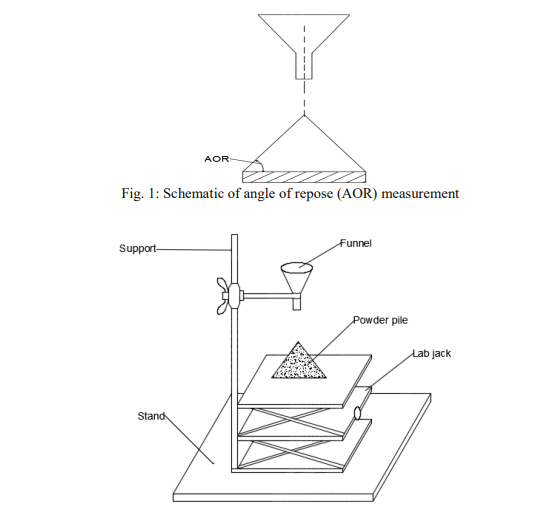The topic of recycling is anything but new, but today innovative methods must be applied to the reuse of an influx of plastics, powders, and other materials being discarded in volume during 3D printing. Now, Nigerian researchers are discussing recycling in relation to PET powders in the recently published ‘Characterization of Recycled Polyethylene Terephthalate Powder for 3D Printing Feedstock.’
Recycling crushed plastic bottles into 3D printing material, authors C.N. Nwogu, Remy Uche, J.O. Igobkwe, and A.C. Okoronkwo examine the following characteristics of the powder:
- Flow property
- Coefficient of friction
- Bulk density
- Flexural strength
- Tensile strength
They also compare the recycled powder, which stems from the most commonly used plastic (bearing a number 1), to ABS, PLA, PVA, nylon, and HDPE in 3D printing.
“Plastic recycling reduces the approximately eight million metric tons of waste plastic materials that enter the earth’s ocean every year especially as plastic is non-biodegradable,” state the authors. “Before now, injection molding was the most commonly used manufacturing process for the fabrication of plastic parts but challenges like: high cost of designing new molds, presence of defects (bubbles, unfilled sections, sink marks, etc.), difficulty in producing complex parts in one piece and color inconsistency of molded part led to the discovery of 3D printing.”
Both grade 1 and grade 2 forms of PET bottles were used, with five different experimental runs for each sample. In examining mechanical properties and flow-ability, the authors considered influencing factors like particle size and shape, density, porosity, and moisture. To determine powder flow property, they focused on the following:
- Angle of repose
- Compressibility index
- Dispersibility
- Flow through an orifice
Coefficient of friction (the relationship between frictional force and the ‘normal reaction between two objects’) was evaluated, along with bulk density—the ratio of the mass of the material to the occupied volume. The researchers point out that because bulk density is dependent on specific handling, ‘it is not an intrinsic property.’
Flexural strength was tested via the three-point bending test, allowing for the highest stress possible, with plastic powder extruded and then assessed on a flexural test machine. Tensile strength was tested by recording and plotting stress versus strain—with the amount of load weight finally breaking the wire acting as breaking strength—with a larger wire taking longer to break.
“Experimental results show that both PET1 and PET2 have very good flow property. Also, comparison with other 3D printing plastics like: ABS, PLA, PVA, Nylon and HDPE shows that the PET powder is suitable for 3D printing,” concluded the researchers. “This study solves two major problems: plastic waste management and availability of locally produced 3D printing feedstock, which is currently the greatest challenge of 3D printing in Nigeria.”
Environmental concerns continue around the world with an even greater sense of urgency and effort to reduce the human footprint. This includes many different aspects of the material realm in 3D printing as so many new techniques and textures are evolving. Researchers and users on nearly every level are working to recycle from simply converting recycled plastics into new filament, recycling powder, and more attention-getting programs like using weed containers to create prosthetics or creating manufacturing alternatives like wood.
What do you think of this news? Let us know your thoughts! Join the discussion of this and other 3D printing topics at 3DPrintBoard.com.
[Source / Images: ‘Characterization of Recycled Polyethylene Terephthalate Powder for 3D Printing Feedstock’]Subscribe to Our Email Newsletter
Stay up-to-date on all the latest news from the 3D printing industry and receive information and offers from third party vendors.
Print Services
Upload your 3D Models and get them printed quickly and efficiently.
You May Also Like
Consolidation in AM: How 2025 Is Shaping the Industry’s New Normal
The first half of 2025 has been marked by a clear shift in the additive manufacturing (AM) industry. Companies are no longer just focused on developing new tech by themselves....
Etsy Design Rule Change Reduces Selection of 3D Printed Goods
Online marketplace Etsy has implemented a rule change requiring all 3D printed goods on the site to be original designs. The update to the site’s Creativity Standards states, ¨Items produced using...
U.S. Congress Calls Out 3D Printing in Proposal for Commercial Reserve Manufacturing Network
Last week, the U.S. House of Representatives’ Appropriations Committee moved the FY 2026 defense bill forward to the House floor. Included in the legislation is a $131 million proposal for...
Transforming From Tourist to Native: Duro CEO Michael Corr Explains Why the Company Rebuilt its PLM Software on AI
In these early innings of the AI boom, many market analysts have expressed concern that AI spend has gotten too far ahead of the technology’s proven ability to deliver significant...



































